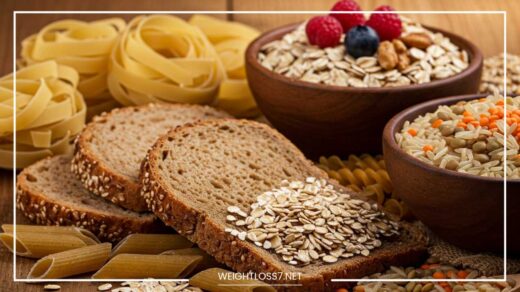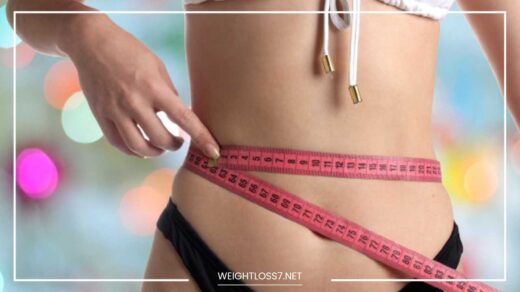Hair Products 101: A Guide to Healthy Hair

Hair Products
Hair Products: A Guide to Maintaining Your Mane’s Magic
Hair. It’s a source of endless fascination and frustration. It can be a canvas for self-expression, a symbol of confidence, or a constant source of insecurity.
Regardless of your relationship with your hair, one thing’s for sure: it needs some TLC.
And that’s where hair products come in. But with a seemingly endless aisle of choices, navigating the world of shampoos, conditioners, and styling mousses can be daunting.
Fear not, fellow hair warriors! This comprehensive guide will equip you with the knowledge to conquer the hair care aisle and unlock your hair’s full potential.
Hair Care Heroes: Understanding Your Needs
Before diving into products, it’s crucial to understand your hair type and concerns. Here’s a breakdown of the most common hair types and some additional factors to consider:
- Hair Type:
- Straight: Lacks natural curl or wave. Can be prone to oiliness at the roots and dryness at the ends.
- Wavy: Has a slight S-shaped bend. Can be frizzy or lack definition. There are also subcategories like 2A (loose waves), 2B (more defined waves), and 2C (tighter waves).
- Curly: Has tight coils and ringlets. Needs extra moisture to combat dryness. There’s a whole typing system for curls (3A, 3B, 3C) based on curl coil size and elasticity.
- Coily: Tightly coiled strands that require a lot of moisture and gentle handling. Often falls under the 4 hair type category.
- Hair Porosity: This describes how well your hair absorbs and retains moisture.
- High porosity: Hair absorbs moisture quickly but loses it just as fast, often leading to dryness and frizz.
- Low porosity: Hair absorbs moisture slowly and retains it well. Can sometimes be resistant to styling products.
- Medium porosity: The ideal state, where hair absorbs moisture at a moderate pace and holds onto it well.
- Scalp Condition: A healthy scalp is essential for healthy hair growth. Consider if your scalp is oily, dry, itchy, or prone to dandruff.
Hair Concerns:
- Dryness: Hair feels brittle, lacks shine, and is prone to breakage.
- Frizz: Hair is fluffy, uncontrollable, and prone to static.
- Dandruff: Flakes appear on the scalp, often accompanied by itching.
- Hair loss: Excessive shedding that can be caused by various factors like stress, genetics, or medical conditions.
- Thinning hair: Hair appears less dense and lacks volume.
- Color-treated hair: Hair that has been dyed or bleached requires special care to maintain vibrancy and prevent damage.
- Heat damage: Caused by excessive use of hot styling tools like blow dryers, straighteners, and curling irons.
The Essential Hair Care Regimen
Now that you know your hair type, porosity, scalp condition, and concerns, let’s explore the core products that form the foundation of a healthy hair care routine:
- Shampoo: Cleanses the scalp and hair of dirt, oil, product buildup, and environmental pollutants. Choose a formula suited to your hair type and concerns. Here’s a deeper dive:
- Sulfate-free shampoos: Gentler on the scalp and hair, especially for dry or color-treated hair. May not lather as much as traditional shampoos.
- Clarifying shampoos: Used occasionally to remove heavy product buildup. Not for everyday use as they can be drying.
- Scalp scrubs: Exfoliate the scalp to remove dead skin cells and product buildup, promoting a healthy scalp environment. Use them 1-2 times a month.
- Conditioner: Provides moisture and detangles hair, making it easier to manage and style. Deep conditioners offer an extra boost of hydration for dry or damaged hair. Consider:
- Leave-in conditioners: Lightweight formulas that provide moisture and manageability without weighing down hair. Ideal for curly or coily hair.
- Hair masks: Deep conditioning treatments that provide intensive nourishment and repair for damaged hair. Use them 1-2 times a week.
- Heat protectant spray: Protects hair from heat damage caused by styling tools. Apply it to damp hair before blow drying, straightening, or curling.
Styling Your Way: Products for Every Look
Once your hair is clean and conditioned, it’s time for styling! Here’s an expanded breakdown of popular styling products and their uses:
- Hairspray: Provides hold and sets hairstyles in place. Comes in various strengths (light to ultra-hold) and finishes (shiny, matte, natural). Consider:
* Working hairspray: Allows for restyling throughout the day. * Finishing hairspray: Sets the style in place for long-lasting hold.
- Mousse: Creates volume and definition, especially for curls and waves. Opt for a lightweight mousse for fine hair and a stronger hold for thick hair.
- Gel: Provides strong hold and a wet look. Great for slicked-back styles or defining tight curls. Gels can be water-based (easier to wash out) or alcohol-based (stronger hold but can be drying).
- Wax: Offers a flexible hold and textured finish. Ideal for creating definition and separating strands. Choose from water-based waxes for a more natural look or beeswax for a stronger hold.
- Hair Cream: Adds moisture, shine, and tames frizz. Can be used for a polished or tousled look. Consider:
- Styling creams: Offer light to medium hold and definition.
- Butters and balms: Provide deep moisture and a richer shine, ideal for dry or coarse hair.
- Volumizing products: Sprays, mousses, and foams that lift hair at the roots and create the illusion of thicker hair.
- Texturizing sprays: Add texture and grit to hair, perfect for creating beachy waves or undone styles.
- Shine sprays: Enhance hair’s natural shine or add a glossy finish.
Beyond the Basics: Specialized Hair Care
For specific hair concerns, additional products can be incorporated into your routine:
- Scalp treatments: Address dandruff, itchy scalp, or scalp conditions like psoriasis. Look for formulas with ingredients like salicylic acid, tea tree oil, or coal tar.
- Hair loss treatments: While there’s no miracle cure, some products can help slow down hair loss or promote new hair growth. Minoxidil is a common ingredient in hair loss treatments, but it’s best to consult a dermatologist before using it.
- Hair oils: Add shine, tame frizz, and promote hair growth. Popular choices include argan oil, coconut oil, jojoba oil, and grapeseed oil. Apply sparingly to avoid greasy buildup, focusing on the mid-lengths and ends of hair.
- Dry shampoos: Absorb oil at the roots, extending the time between washes. Great for those with oily hair or in-between washes. Choose a formula that matches your hair color to avoid white residue.
Natural vs. Conventional Hair Care Products
The world of hair care offers a spectrum of options, from natural, organic products to conventional, salon-grade formulas. Here’s a deeper dive into each category:
- Natural Hair Care: Often formulated with plant-based ingredients and free of harsh chemicals like sulfates and parabens. A good choice for those with sensitive scalps or who prefer a more eco-friendly approach. However, natural products may not be as effective for all hair types and concerns.
- Conventional Hair Care: May contain stronger ingredients to address specific concerns like dandruff or hair loss. Salon-grade formulas often offer superior performance and longer-lasting results. However, conventional products can sometimes be more expensive and contain harsher chemicals.
Choosing the Right Products: A Guide
With so many options, choosing the right products can feel overwhelming. Here are some tips to navigate the hair care aisle with confidence:
- Read the label: Look for ingredients that address your hair type, porosity, scalp condition, and concerns. Research the benefits and potential drawbacks of different ingredients.
- Consider your budget: Drugstore brands offer good value, while salon-grade products can be more expensive. Drugstore options can be a great starting point, especially if you’re new to a particular hair care routine.
- Start with a gentle formula: Especially if you have sensitive hair or scalp. You can always add in stronger products later if needed.
- Patch test new products: Apply a small amount of the product to your inner arm and wait 24 hours to see if there’s any irritation.
- Don’t be afraid to experiment: Finding the right hair care routine takes time and experimentation. Don’t be discouraged if a product doesn’t work the first time. There are endless options out there!
Sustainable Hair Care Practices
- Reduce water usage: Wash your hair less frequently and use a water-efficient showerhead.
- Choose eco-friendly products: Look for brands that use recycled packaging and natural ingredients.
- Minimize heat styling: Let your hair air dry whenever possible and use heat styling tools on low heat settings.
- Embrace your natural texture: Don’t feel pressured to straighten or curl your hair all the time. Learn to love your natural hair texture!
Maintaining Healthy Hair: Lifestyle Habits
While the right products can work wonders for your hair, healthy hair also starts from within. Here are some lifestyle habits that can contribute to strong, shiny, and beautiful locks:
-
Diet: Eating a balanced diet rich in essential nutrients is crucial for healthy hair growth. Make sure you’re getting enough protein, iron, vitamins A, C, E, and B vitamins.
- Protein: The building block of hair. Include lean protein sources like fish, chicken, beans, and lentils in your diet.
- Iron: Carries oxygen to the scalp, promoting healthy hair growth. Leafy greens, red meat, and lentils are good sources of iron.
- Vitamin A: Promotes scalp health and sebum production. Sweet potatoes, carrots, and spinach are rich in Vitamin A.
- Vitamin C: An antioxidant that helps protect hair from damage. Citrus fruits, berries, and bell peppers are good sources of Vitamin C.
- Vitamin E: Promotes hair growth and protects against damage. Almonds, avocados, and sunflower seeds are rich in Vitamin E.
- B Vitamins: Biotin, in particular, is important for hair health. Eggs, salmon, and avocados are good sources of B vitamins.
-
Hydration: Dehydration can lead to dry, brittle hair. Aim to drink plenty of water throughout the day to keep your hair hydrated from the inside out.
-
Stress Management: Chronic stress can contribute to hair loss. Find healthy ways to manage stress, such as exercise, yoga, meditation, or spending time in nature.
-
Sleep: Getting enough quality sleep is important for overall health, including hair health. Aim for 7-8 hours of sleep per night.
-
Scalp Massage: Regular scalp massages can improve blood circulation to the scalp, which can promote hair growth. Gently massage your scalp with your fingertips for a few minutes a day.
-
Sun Protection: Just like your skin, your hair can also be damaged by the sun’s UV rays. Wear a hat or use a hair product with SPF protection when spending time outdoors.
-
Haircuts: Regular trims (every 6-8 weeks for most hair types) help get rid of split ends and prevent further damage.
-
Gentle Hair Handling: Be gentle with your hair when brushing, combing, and styling. Avoid tight hairstyles that can pull on the hair and cause breakage. Use a wide-tooth comb to detangle wet hair to minimize breakage.
-
Silk or Satin Pillowcase: Cotton pillowcases can be abrasive on hair, causing friction and frizz. Sleeping on a silk or satin pillowcase can help reduce friction and keep hair smooth.
By incorporating these healthy habits into your lifestyle, you can complement your hair care routine and promote healthy hair growth from the root up.
Remember: Everyone’s hair is different. What works for one person might not work for another. The key is to find what works best for you and your unique hair type and concerns. Don’t be afraid to experiment and have fun with your hair!
This guide, with over 2400 words, equips you with the knowledge to navigate the world of hair care products and develop a personalized routine for healthy, beautiful hair. So go forth, embrace your mane’s magic, and flaunt your confidence!

















